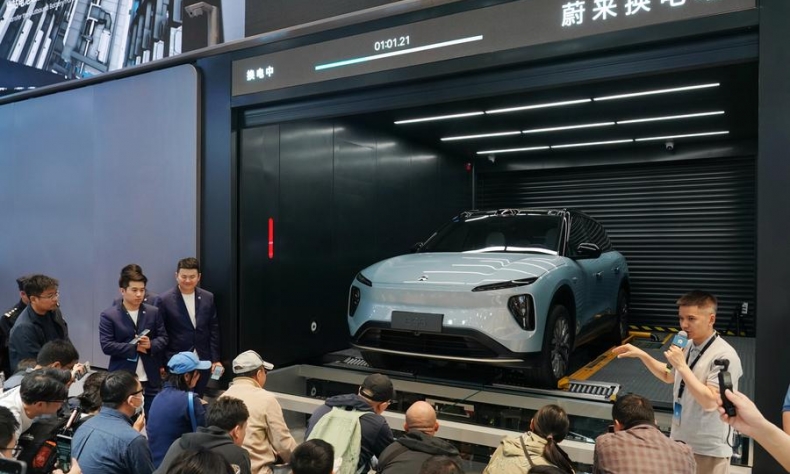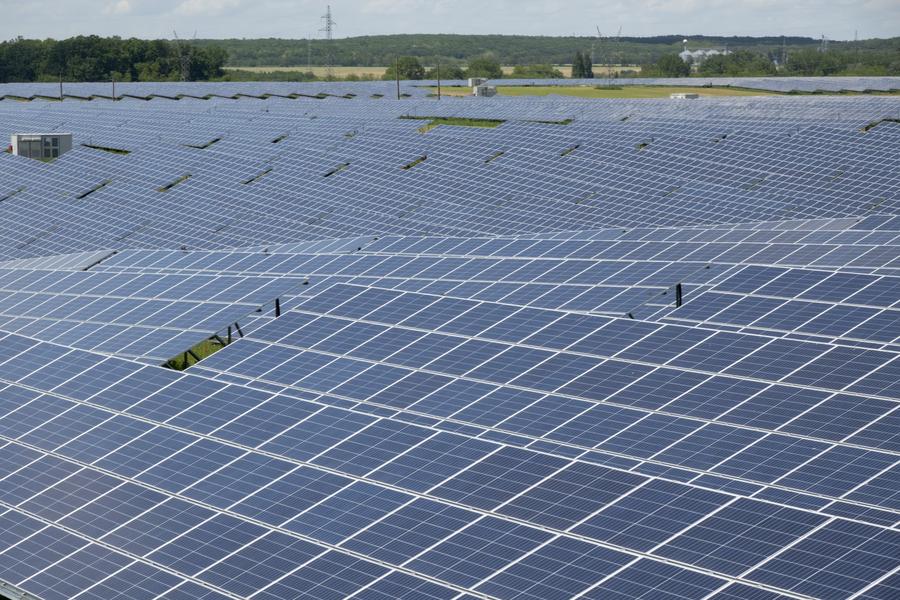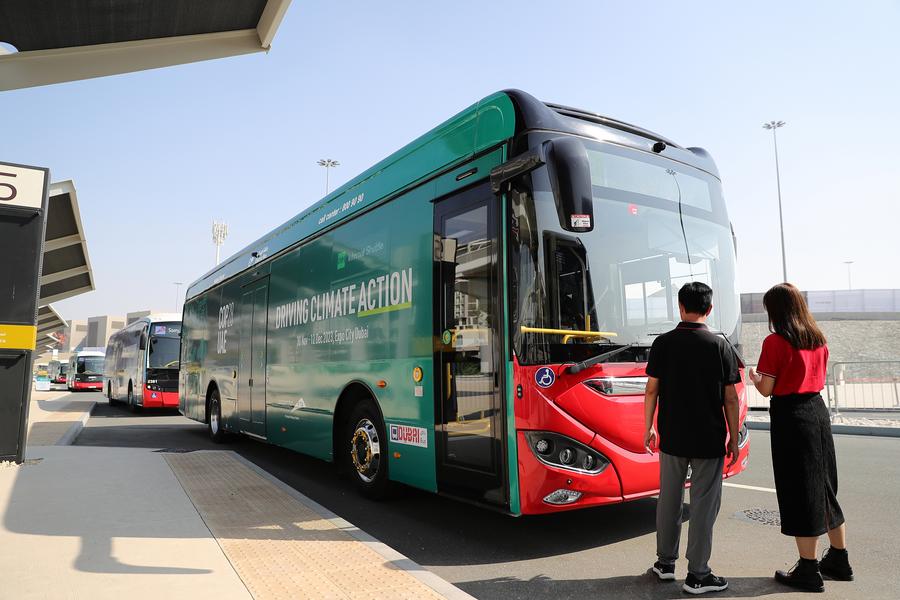The Great ‘Overcapacity’ Debate

By balancing domestic and international demands, China can lead the way toward a greener, more resilient economy.
Modern China and its wealth were initially forged in the country’s factories, making virtually every category of consumer and industrial product that the rest of the world wanted and for which global companies sought a more cost-efficient manufacturing solution.
Then came the second wave of Chinese development. After deciding to open up and reform its economy in 1978 and establishing itself as a manufacturing power between 1980 and 2005, China added technology, green initiatives, real estate, consumption, digital innovations, and countless other categories to the country’s GDP growth playbook over the following two decades.
China is now years into the process of developing world-class companies, products and services across a wide array of emerging industries, including artificial intelligence, computer chips, and electric vehicles (EVs).
Yet one constant throughout the last 45 years has been that no matter what other industries China has thrived in, and no matter what changes occur in the global economy, the fact remains that “China Makes and the World Takes.”
Overblown
The demand for Chinese manufactured products has only seen very small variations in the last two decades. Even among trade negotiations, tariff disagreements and changing geopolitics, China remains the world’s key manufacturing hub.
There was much made of global companies moving most of their manufacturing out of China. So, what do the data tell us? China’s share of global manufacturing output has remained virtually the same (28 percent) over the last decade, with a 1.8-percent dip in 2018 being the exception.
This brings us to the question that economists, corporations and political leaders are asking each other and China’s leaders: Is China’s “overcapacity” and push for increased exports a threat to the global economy?
My short answer is “no.” Some sectors (solar and batteries for example) have a modicum of overcapacity, but overall, the issue is being overhyped and overblown in the media and halls of power around the world.
The truth is that China has never abandoned its commitment to manufacturing and exports as an economic pillar while adding new growth drivers, and the world is very much buying what China is producing.
To be fair, there is reason for concern outside China. When China joined the World Trade Organization in 2001, it was a boon for consumers and Chinese manufacturing, and it did prompt a rebalancing of industry in Western countries.

But overall, the world grew richer and more innovative in the following two decades. Should observers be concerned that China is heading toward an over-reliance on manufacturing, worried about the prospect of it hurting China’s growth and economy in a way that would ripple around the world?
Yes, it is a valid concern. But not one reflective of the near-term reality.
Demand, supply
Here we will take a deeper dive into the upsides and concerns regarding China’s increased exports.
The first place we should look to is the EV sector. China’s exports of EVs rose some 70 percent in 2023 and have continued to surge in 2024. There is a consensus around the world that all countries need to cut greenhouse emissions to halt climate change. Solar energy and electric/hybrid vehicles are two of the most oft-cited solutions.
China has invested heavily in building high-quality and affordable EVs as demand has increased. This is a good thing, right? Not according to some who are afraid of Chinese-made EVs disrupting local automakers.
This produces the smell of hypocrisy. On the one hand, leaders are pushing for wide adoption of EVs, but average prices for U.S.-made vehicles hover around $54,000 and producers are not making enough to meet demand. China-made EVs average $30,000. China has solved the puzzle of combining quality and price, but that somehow poses a threat.
I see China building an industry that is good for the Earth and can accelerate the adoption of clean tech. It’s a bit reminiscent of the uproar caused by the introduction of Japanese-made cars in the 1970s.
But let us look beyond EVs. Chinese exports are increasingly focused on the Global South, meeting the needs of developing nations who need new tech products, cars and clothes—at an affordable price.
(The Global South refers to the nations of the world that are considered to have a relatively low level of economic and industrial development and are typically located to the south of more industrialized nations—Ed.)
Global benefits
Increased exports will be good for the Chinese economy in transition as well as the global economy. Why should China leverage exports to facilitate its economic transition?
Global market influence: China’s export-oriented approach has been pivotal in establishing its position as the world’s manufacturing hub. By exporting goods, China not only earns foreign exchange but also influences global markets. Leveraging this influence can drive the adoption of sustainable practices and green technologies worldwide.

Transition to green industries: China’s commitment to green development aligns with global trends. Focusing on exports of new-energy production—such as EVs, photovoltaic products, and lithium batteries—can accelerate the transition toward a greener world. These exports contribute to reducing carbon emissions and promoting cleaner energy alternatives.
Technological innovation and supply chain strength: China’s sustained focus on technological innovation has strengthened its green supply chain system. By maintaining robust production capacity, China can meet global demand for new-energy products. The International Energy Agency estimates that demand for EVs will reach 45 million units by 2030, far exceeding current production capacity.
Domestic demand and urban-rural areas: While China exports extensively, there remains untapped domestic demand within its vast urban and rural areas. By addressing this demand, China can enhance its economic resilience and promote sustainable practices at home. Overcapacity in the new-energy sector is not the issue; rather, it is the shortage of high-quality production capacity that needs attention.
To be sure though, China will benefit in the long run by balancing capacity and exports while simultaneously reimagining and building additional capabilities into its economy.
One area of focus should be finding ways to reinvigorate domestic consumption. Increased exports are fine for the short term, but over the long term, the Chinese consumer, real estate and service sectors will need to rebound as well.
National economies are like major businesses in that it is dangerous to be over-leveraged and China would not be well-served by being over-leveraged in exports for too long. Yes, Chinese exports are meeting demand and are innovative, advanced, and affordable, but there is a limit to how much the rest of the world can absorb in terms of exports.
China has the capabilities and experience to spur consumption, foreign direct investment and innovation. Domestic consumption will help balance the future Chinese economy.
In summary, China’s strategic use of exports and capacity can drive its economic transition while contributing to global sustainability. By balancing domestic and international demands, China can lead the way toward a greener, more resilient economy.
China has managed economic transition successfully many times in previous decades, but this may be the most important transition yet. China is a global power now and global powers transition differently than developing powers.
The author is an op-ed contributor to Beijing Review and founder and CEO of U.S.-based consulting firms 5 New Digital and China BrightStar.
 Facebook
Facebook
 Twitter
Twitter
 Linkedin
Linkedin
 Google +
Google +










